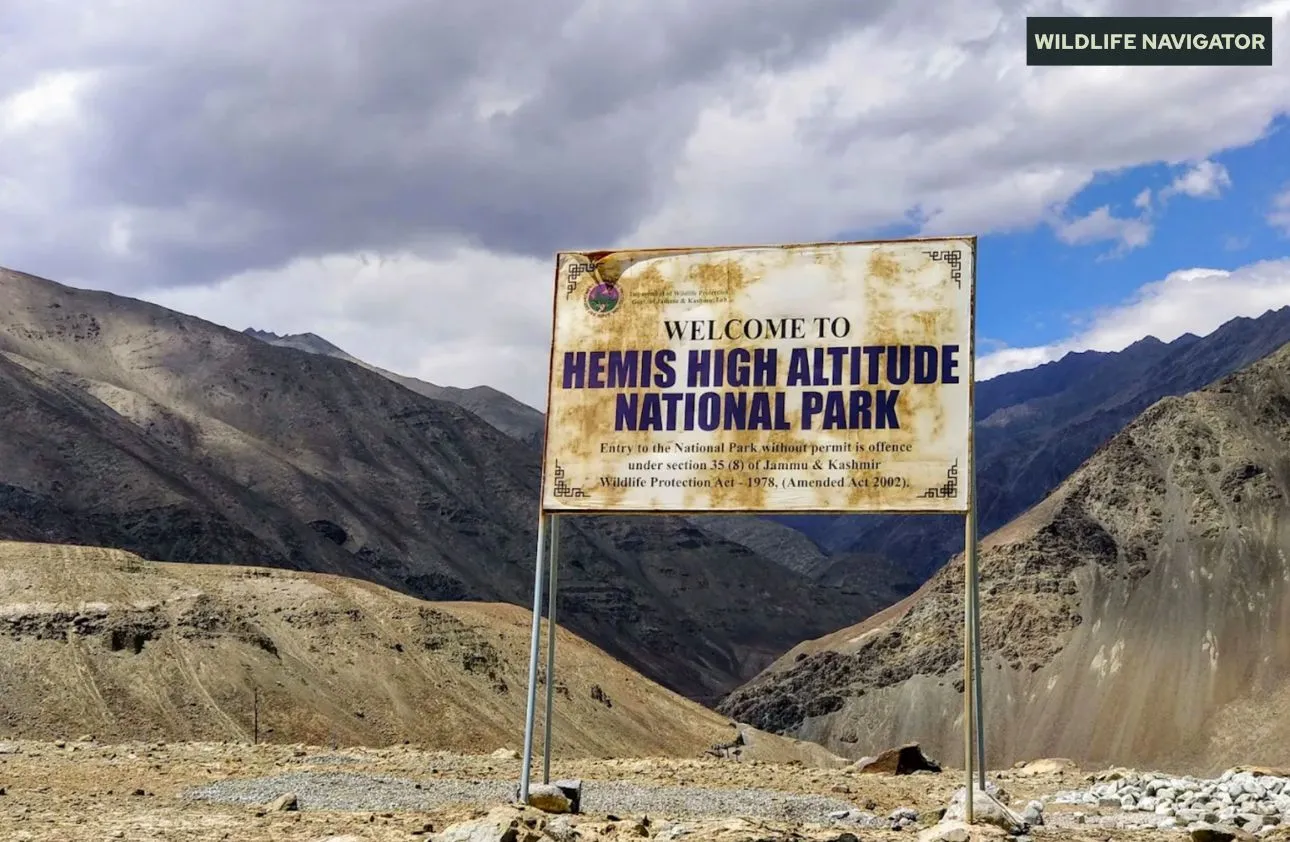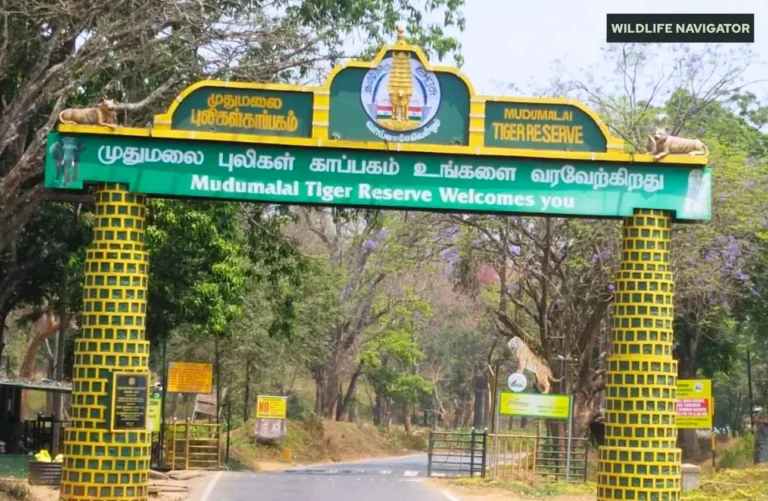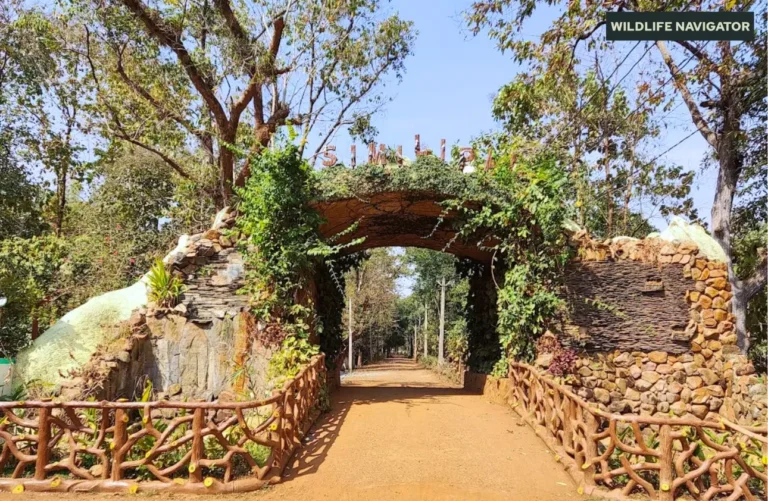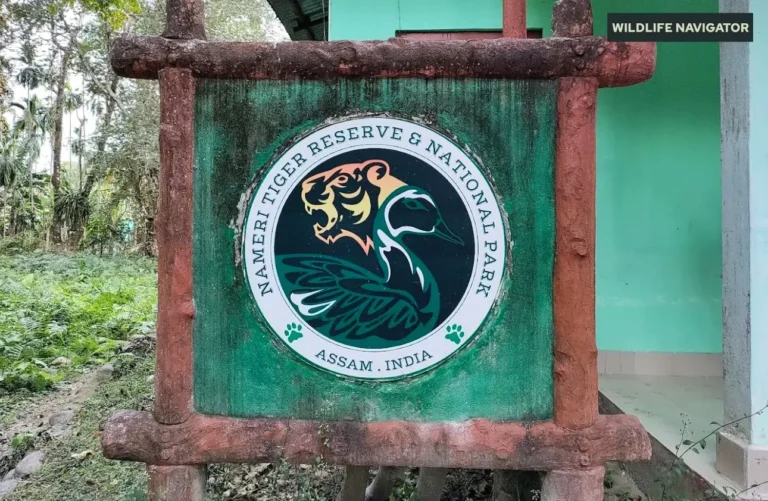Hemis National Park: The Majestic High-Altitude Wilderness of Ladakh

Hemis National Park, located in the breathtaking landscapes of Ladakh, Jammu & Kashmir, is one of the most remarkable protected areas in India. As the largest national park in India, it spans an area of over 4,400 square kilometres, covering high-altitude valleys, rugged mountains, and glacial streams. Known primarily for being a haven for the elusive snow leopard, Hemis National Park is not only a critical wildlife sanctuary but also a site of immense ecological and cultural significance.
The park is part of the fragile Himalayan ecosystem, supporting a unique range of flora and fauna that have adapted to survive in extreme climatic conditions. From the high-altitude alpine meadows to the stark, rocky landscapes, the park provides an essential refuge for endangered species and migratory birds.
Hemis National Park is also closely connected to the local culture, with the famous Hemis Monastery located nearby. The annual Hemis festival, celebrated with colourful masks, dances, and rituals, draws attention to the rich heritage of Ladakh, blending natural beauty with cultural traditions.
For wildlife enthusiasts and nature lovers, Hemis National Park represents the perfect destination to explore national parks in India while observing rare species in their natural habitat. Its combination of pristine wilderness, endemic species, and cultural richness makes it a unique jewel in India’s network of protected areas.
2. History and Establishment
Hemis National Park was officially established in 1981 with the primary aim of protecting the endangered snow leopard and preserving the fragile high-altitude ecosystems of Ladakh. The park was carved out of the vast mountainous regions surrounding the Hemis Monastery, one of the most famous and historic monasteries in the region. Its establishment marked a significant step in India’s wildlife conservation efforts, highlighting the importance of protecting both biodiversity and cultural heritage.
Before becoming a national park, the area was already revered by local communities for its spiritual and ecological value. The park’s proximity to Hemis Monastery meant that many traditions, including the annual Hemis festival, coexisted with the natural landscape, creating a harmonious balance between humans and wildlife. The local Ladakhi people have historically played a key role in conserving the land, practicing sustainable grazing and respecting wildlife habitats.
Over the years, Hemis National Park has evolved into a sanctuary not just for snow leopards but also for several endangered species like the Tibetan wolf, Himalayan brown bear, and Eurasian lynx. The government, in collaboration with wildlife researchers and NGOs, has implemented measures such as anti-poaching patrols, scientific monitoring, and habitat restoration programs to ensure the park remains a safe haven for its wildlife.
Today, Hemis National Park stands as a symbol of successful conservation in India, representing the balance between protecting wildlife sanctuaries in India and preserving the rich cultural traditions of the Ladakhi people.
Geography and Climate
Hemis National Park is situated in the eastern region of Ladakh, Jammu & Kashmir, encompassing the high-altitude valleys of the Himalayas. Covering an area of approximately 4,400 square kilometers, it is the largest national park in India. The park’s terrain is extremely rugged, with towering mountain ranges, deep valleys, glacial streams, and rocky outcrops, creating a diverse landscape that supports a wide variety of wildlife. Its altitude ranges from 3,000 meters to over 6,000 meters above sea level, making it one of the highest wildlife habitats in the country.
The park’s geography is dominated by alpine and arid landscapes, with sparse vegetation in the higher regions and alpine meadows in lower valleys. Snow-capped peaks, moraines, and highland lakes contribute to its stunning natural beauty and make it an ideal habitat for species adapted to cold, harsh conditions. Rivers and streams originating from glacial melts add to the ecological richness, providing water sources for both wildlife and local communities.
The climate in Hemis National Park is extreme, characterized by long, harsh winters and short, mild summers. Winter temperatures often drop below -30°C, while summer temperatures range between 10°C and 20°C. The park experiences heavy snowfall during winter, which shapes the migration and behavior of wildlife. Summers, though brief, are crucial for grazing herbivores like the blue sheep and ibex and for migratory birds that visit the park.
Hemis’ unique combination of high-altitude geography and extreme climate makes it a challenging but rewarding destination for both wildlife researchers and eco-tourists. The harsh environment ensures that only the most well-adapted species thrive here, giving the park its distinctive ecological significance.
Flora of Hemis National Park
Hemis National Park, situated at high altitudes in the Himalayas, hosts a unique variety of alpine and cold-desert vegetation. The extreme climate and rocky terrain have shaped a plant ecosystem that is both sparse and resilient, supporting wildlife and maintaining ecological balance. Vegetation in the park changes with altitude, ranging from alpine meadows and shrublands in lower regions to barren rocky slopes at higher elevations.
Some of the key types of flora found in Hemis National Park include:
- Alpine Meadows: Rich in grasses and herbaceous plants, these meadows provide grazing grounds for herbivores such as blue sheep, ibex, and marmots.
- Shrublands: Hardy shrubs like Caragana and Juniper grow in rocky areas, offering shelter and food for smaller mammals and birds.
- Medicinal and Aromatic Plants: Species such as Rheum (rhubarb), Saussurea, and Artemisia are valued for traditional Ladakhi medicine.
- Willow and Poplar Trees: Found along riverbanks and lower valleys, these trees stabilize soil and provide shade for animals.
- Seasonal Wildflowers: In summer, the meadows bloom with colorful flowers like primroses, poppies, and gentians, adding to the park’s scenic beauty.
The flora of Hemis National Park is highly adapted to survive in low-oxygen, cold, and arid conditions. These plants play a crucial role in sustaining the park’s wildlife, offering food, shelter, and breeding grounds. Seasonal changes are pronounced; brief summers bring life and greenery, while harsh winters turn the landscape into a snowy, almost barren expanse. The unique plant diversity of Hemis contributes significantly to its ecological importance and makes it a fascinating destination for botanists and nature enthusiasts alike.
Fauna of Hemis National Park
Hemis National Park is renowned for its high-altitude wildlife and is one of the few places in India where the elusive snow leopard can be spotted. The park’s extreme environment and rugged terrain have created a haven for a wide range of mammals, birds, and reptiles, many of which are specially adapted to survive in harsh conditions.
Mammals
- Snow Leopard: The park is one of the primary habitats for this endangered big cat.
- Tibetan Wolf: Found in the higher ranges, these wolves are apex predators in the park.
- Himalayan Brown Bear: A rare and powerful resident of the alpine valleys.
- Blue Sheep (Bharal): An important prey species for snow leopards.
- Ibex: Agile mountain goats that navigate steep cliffs effortlessly.
- Marmots and Pikas: Small mammals that thrive in rocky areas.
Birds
- Lammergeier (Bearded Vulture): Scavenger birds that soar high above the valleys.
- Himalayan Snowcock: Ground-dwelling birds that blend with rocky terrain.
- Golden Eagle: Majestic raptors that hunt over open landscapes.
- Choughs and Ravens: Common in valleys and near human settlements.
Reptiles and Others
- While reptiles are scarce due to cold temperatures, some lizards and geckos are adapted to survive in this high-altitude habitat.
- Insects and spiders are present in smaller numbers, playing important roles in the food web.
The wildlife of Hemis National Park is remarkable not only for its diversity but also for the adaptations animals have developed to survive extreme cold, scarce vegetation, and rugged terrain. Protecting this fauna is a primary reason for the park’s existence, making it one of the most important wildlife sanctuaries in India and a critical site for conservation efforts.
Conservation Significance
Hemis National Park plays a crucial role in the conservation of high-altitude wildlife and fragile Himalayan ecosystems. It was primarily established to protect the endangered snow leopard, but over time, its significance has expanded to include the preservation of other rare mammals, birds, and plants. The park serves as a vital refuge for species that are highly specialized and cannot survive outside this harsh environment.
Conservation efforts in Hemis National Park include:
- Anti-Poaching Measures: Regular patrols and monitoring prevent illegal hunting and protect vulnerable species such as snow leopards, Himalayan brown bears, and Tibetan wolves.
- Scientific Research: Wildlife biologists and ecologists study animal behavior, migration patterns, and habitat use to inform better conservation strategies.
- Habitat Protection: Measures like restricting human settlements, grazing management, and limiting tourism activities help maintain the natural balance of ecosystems.
- Community Involvement: Local Ladakhi communities play a critical role in protecting wildlife by practicing sustainable livelihoods, reporting illegal activities, and participating in eco-tourism programs.
- Endangered Species Programs: Focused initiatives aim to monitor snow leopards, blue sheep, and other threatened species, ensuring population stability.
Hemis National Park’s conservation significance extends beyond its borders. It is part of a larger network of national parks and wildlife sanctuaries in India that collectively protect biodiversity in the Himalayas. By safeguarding both wildlife and their habitats, the park contributes to ecological balance, scientific research, and environmental education, making it a model for high-altitude conservation worldwide.
Tourism and Accessibility
Hemis National Park offers a unique experience for nature lovers, wildlife enthusiasts, and adventure seekers, but its high-altitude terrain requires careful planning. The park is situated in Ladakh, Jammu & Kashmir, and the nearest major town is Leh, approximately 145 kilometers away. Visitors typically reach the park via road, with well-maintained routes passing through stunning mountain landscapes and traditional Ladakhi villages.
Best Time to Visit
The ideal period to explore Hemis National Park is from May to September, when the weather is mild, snow has melted from most areas, and wildlife is active. Winters are extremely harsh, with temperatures dropping below -30°C, making travel nearly impossible. Summer months offer a glimpse of blooming alpine meadows, flowing glacial streams, and active wildlife.
Trekking and Wildlife Spotting
The park is perfect for trekking and nature walks. Popular routes include alpine meadows and valleys where snow leopards, ibex, and blue sheep can be observed. Birdwatchers can spot lammergeiers, Himalayan snowcocks, and golden eagles in open landscapes. Photography enthusiasts often visit to capture the park’s breathtaking scenery and rare wildlife.
Permits and Regulations
Visitors need to obtain permits from the forest department to enter Hemis National Park. Strict rules are in place to ensure minimal disturbance to wildlife, including restrictions on camping, littering, and off-road driving. Guided tours with trained naturalists are recommended for safe wildlife observation and a deeper understanding of the ecosystem.
Hemis National Park provides a combination of natural beauty, wildlife adventure, and cultural experiences, making it one of the most rewarding national parks in India for responsible travelers.
Interesting Facts
Hemis National Park is a treasure trove of unique wildlife and cultural wonders, making it one of the most fascinating protected areas in India. Here are some interesting facts about the park:
- Highest-Altitude National Park in India: Hemis ranges from 3,000 to 6,000 meters, making it one of the highest wildlife habitats in the world.
- Home to the Elusive Snow Leopard: It is one of the few places in India where this endangered big cat can be observed in the wild.
- Cultural Significance: The park surrounds the famous Hemis Monastery, and the annual Hemis Festival draws tourists with its colorful masks, dances, and rituals.
- Biodiversity Hotspot: Despite harsh conditions, the park supports a variety of mammals, birds, and high-altitude flora.
- Adapted Wildlife: Animals like blue sheep, ibex, and Tibetan wolves have evolved unique adaptations to survive extreme cold, scarce oxygen, and rugged terrain.
- Seasonal Landscapes: Summers bring vibrant alpine meadows and wildflowers, while winters turn the park into a snowy, serene wilderness.
- Scientific Research Hub: Researchers and conservationists study snow leopards, Himalayan brown bears, and alpine ecosystems to better understand high-altitude wildlife.
These facts highlight Hemis National Park as a remarkable blend of natural beauty, wildlife richness, and cultural heritage. For travelers and wildlife enthusiasts, it offers not just a chance to witness rare species but also an opportunity to experience the unique traditions and landscapes of Ladakh.
Accommodation
While Hemis National Park itself is a protected area with strict regulations, there are several accommodation options available in nearby towns and villages that allow visitors to stay comfortably while exploring the park. Most lodging is located in Leh or in smaller villages near the park, offering convenient access to trekking routes, wildlife observation points, and cultural sites.
Types of Accommodation
- Hotels and Guesthouses in Leh: Leh, the closest major town, offers a wide range of options from budget guesthouses to luxury hotels. These establishments provide modern amenities, warm rooms, and easy access to local markets and travel services.
- Homestays in Nearby Villages: For a more authentic experience, visitors can stay with local Ladakhi families in villages like Hemis Shukpachan. Homestays offer insight into local culture, traditional cuisine, and sustainable living practices.
- Eco Camps and Tented Lodges: Some tour operators provide eco-friendly camping options and tented lodges near the park’s trekking routes. These accommodations are designed to minimize environmental impact while giving visitors an immersive wilderness experience.
Tips for Visitors
- Book accommodations in advance, especially during May to September, the peak visiting season.
- Prepare for high-altitude conditions: heating, warm bedding, and altitude-appropriate meals are essential.
- Respect local customs and park regulations; many lodges and homestays follow strict eco-friendly practices.
Staying near Hemis National Park allows visitors to combine wildlife exploration with cultural immersion, making the trip both comfortable and memorable.
Conclusion
Hemis National Park stands as a remarkable example of India’s natural and cultural heritage, combining breathtaking landscapes, unique wildlife, and rich traditions. As the largest national park in India, it provides sanctuary to endangered species like the snow leopard, Himalayan brown bear, and Tibetan wolf, while supporting high-altitude flora that sustains the ecosystem.
Beyond its ecological importance, Hemis also holds deep cultural significance due to its proximity to the Hemis Monastery and the celebration of the annual Hemis Festival, where tradition and nature coexist harmoniously. The park’s extreme terrain and climate challenge both wildlife and visitors, making it a destination that demands respect, careful planning, and responsible tourism.
For nature enthusiasts, researchers, and adventurers, Hemis National Park offers an unmatched experience of observing rare wildlife, exploring alpine meadows, and witnessing the unique adaptations of life in high-altitude environments. Its conservation efforts highlight the importance of protecting fragile ecosystems while engaging local communities in sustainable practices.
Ultimately, Hemis National Park is not just a sanctuary for animals and plants—it is a living testament to the resilience of life, the beauty of the Himalayas, and the enduring connection between nature and culture. Visiting or supporting the park contributes to preserving one of India’s most extraordinary natural treasures.
FAQ
1. How do I reach Hemis National Park?
Hemis National Park is located in Ladakh, Jammu & Kashmir. The nearest major town is Leh, which is well-connected by road and air. From Leh, visitors can hire taxis or join guided tours to reach the park.
2. What is the best time to visit Hemis National Park?
The ideal visiting period is from May to September, when the weather is mild, snow has melted, and wildlife is more active. Winters are extremely cold and inaccessible for most travelers.
3. Which animals can I see in Hemis National Park?
The park is famous for the snow leopard, Tibetan wolf, Himalayan brown bear, blue sheep, and ibex. Birdwatchers can spot lammergeiers, Himalayan snowcocks, and golden eagles.
4. Are permits required to enter Hemis National Park?
Yes, visitors must obtain permits from the forest department to enter the park. Guided tours are recommended to ensure safety and compliance with park regulations.
5. What accommodation options are available near the park?
Lodging is available in Leh, nearby villages, and eco-friendly campsites. Options include hotels, guesthouses, homestays, and tented lodges. Booking in advance is recommended, especially during peak season.
6. Is it safe to visit Hemis National Park alone?
While the park is generally safe, its high-altitude terrain and harsh climate make it advisable to travel with guides or organized tours, particularly for trekking or wildlife spotting.





